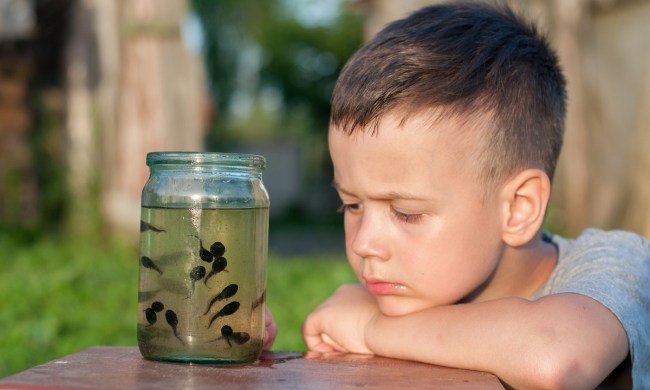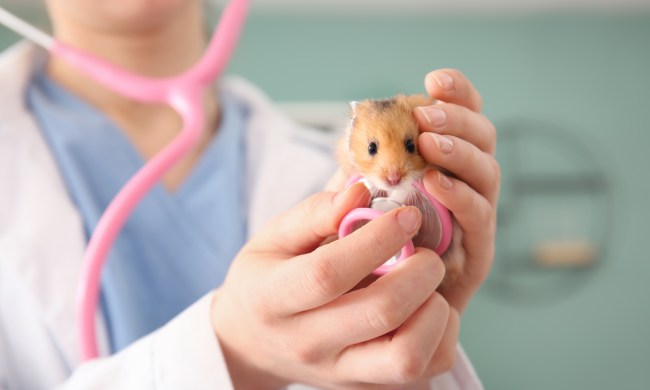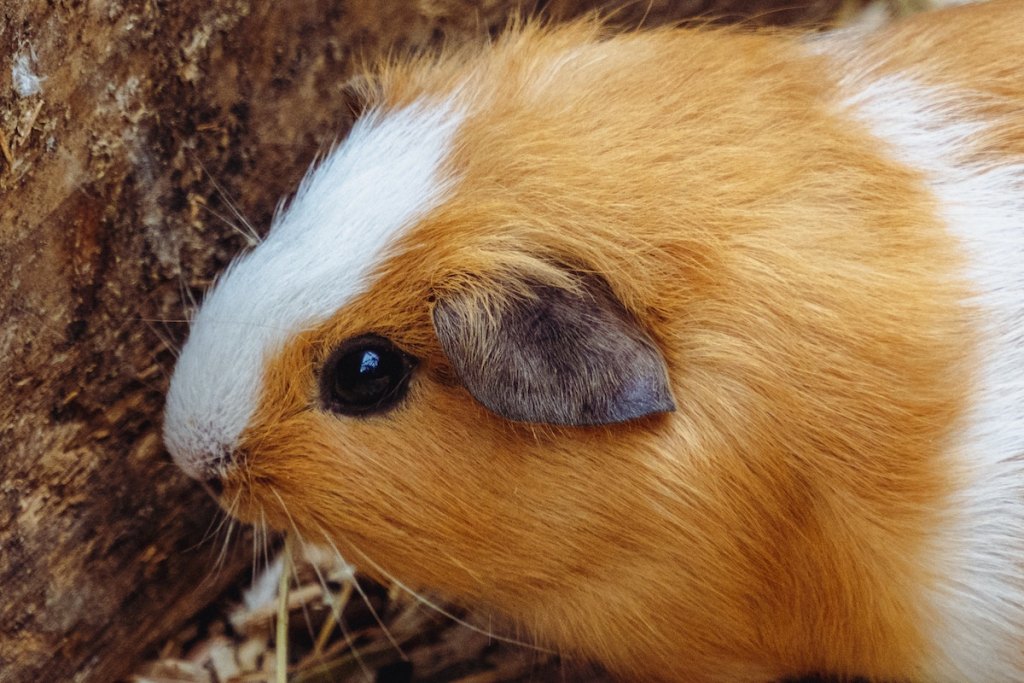
Sharing a meal brings us closer to other humans and to our pets. It’s fun to break out the snacks and cut a carrot in half — half for you and half for your small creature. Many of the little guys, such as guinea pigs, rely on these foods as part of a balanced diet.
Guinea pigs are herbivores that love to munch on a variety of plants, including fruits. Too much of one thing, though, will throw off their diet, and you need to be careful not to give your rodent anything they can’t digest. These guys have naturally delicate systems, so be careful before you reach for just anything in your kitchen. Can guinea pigs eat apples? Certainly, if they’re prepared properly.

What should you feed your guinea pig?
Your guinea’s diet must consist of three major food groups: hay, commercial pellets, and fruits and veggies. The most important element is the hay, which should be kept in the cage at all times. That means you need to continue to replace it as he eats it up or when it gets dirty.
Additionally, you want to supplement the hay with yummy fruits and veggies. In fact, you should provide approximately one cup of leafy greens to your pig every day (and that’s each pig, so two cups total for a pair). Additionally, they can have treats like blueberries, apples, and kiwi. Just as you would not live off of cake, so too, your pet shouldn’t have too much sweet fruit.
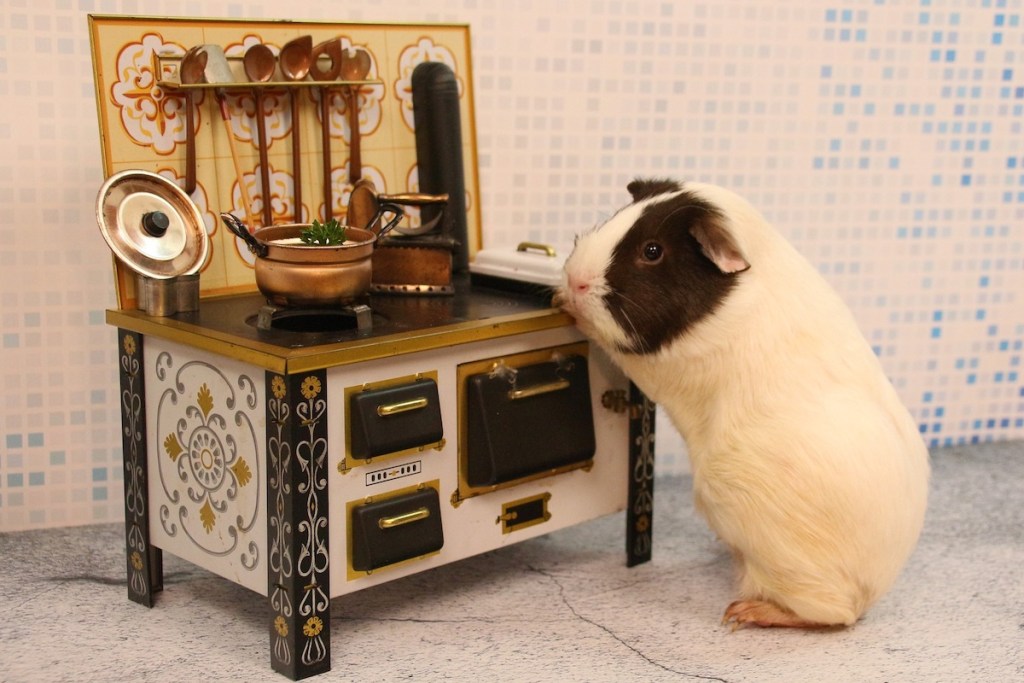
How often can you give them treats?
While green veggies like parsley, dark lettuce, and basil should be an everyday nibble, you want to save the sugary snacks for only every other day or so. We often recommend setting up a whiteboard or something similar to track when your cutie has had his dessert since he’ll definitely pretend he hasn’t. That way, you don’t accidentally overload him with treats and wind up giving him tummy issues like diarrhea.
Also, mix up which special foods he gets so he can enjoy the variety and consume more nutrients. Remember, like us, guinea pigs don’t synthesize their own vitamin C, so they need it in their diet. Otherwise, they might be at risk of developing scurvy.
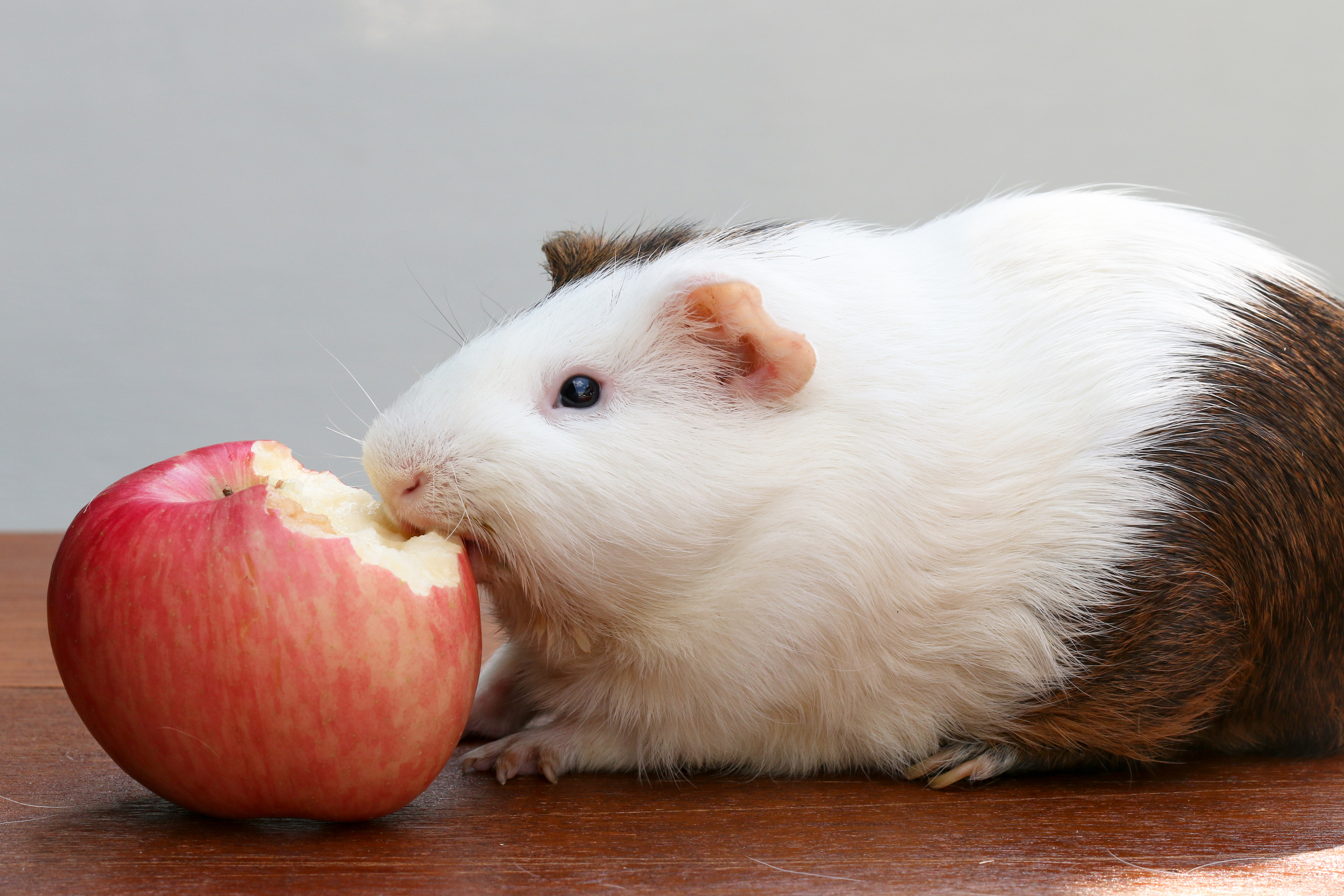
Is it safe for guinea pigs to eat apples?
Absolutely, and your piggie will love you for it! Apples can become your go-to fruit when you want to reward your pet. A whole one is likely too much for your tiny friend, though, so here’s where you get to share. Start him off with just one wedge and see if he takes a liking to it.
Every pet has different preferences, just like you, and you may find he prefers something else (like a nice, fat blueberry). You also want to introduce new foods slowly to maintain that precarious digestive system. Start with one or two apples per week and weave in a consistent repertoire of delicious munchies from there.
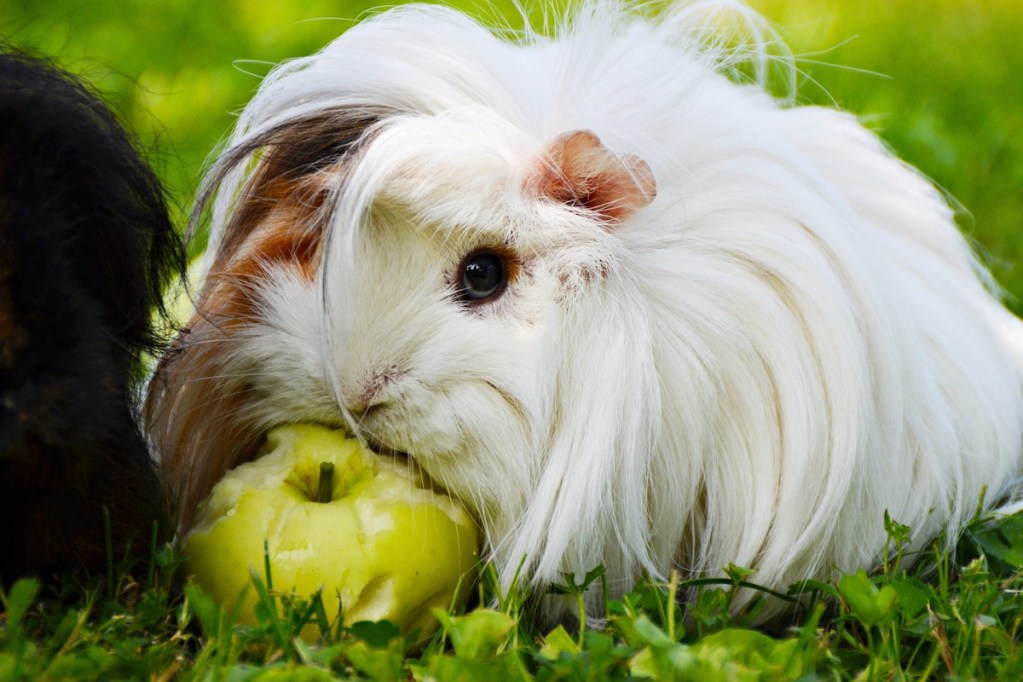
Can guinea pigs eat apples with skin?
Before you offer that slice to your pet, you’ll need to do a few things to prepare it. First, do not allow him to eat the apple seeds or any part of the core. Keep the skin on though, because the fiber is good for your cavy (and he’ll enjoy it).
In addition, you want to make sure the fruit is very fresh and not under-ripe or too acidic. Avoid green apples and crab apples that could be harsh on his stomach because they’re so biting. Lastly, you can provide the dried variety as long as you carefully monitor his sugar intake (as these are often extra sweet without the water).
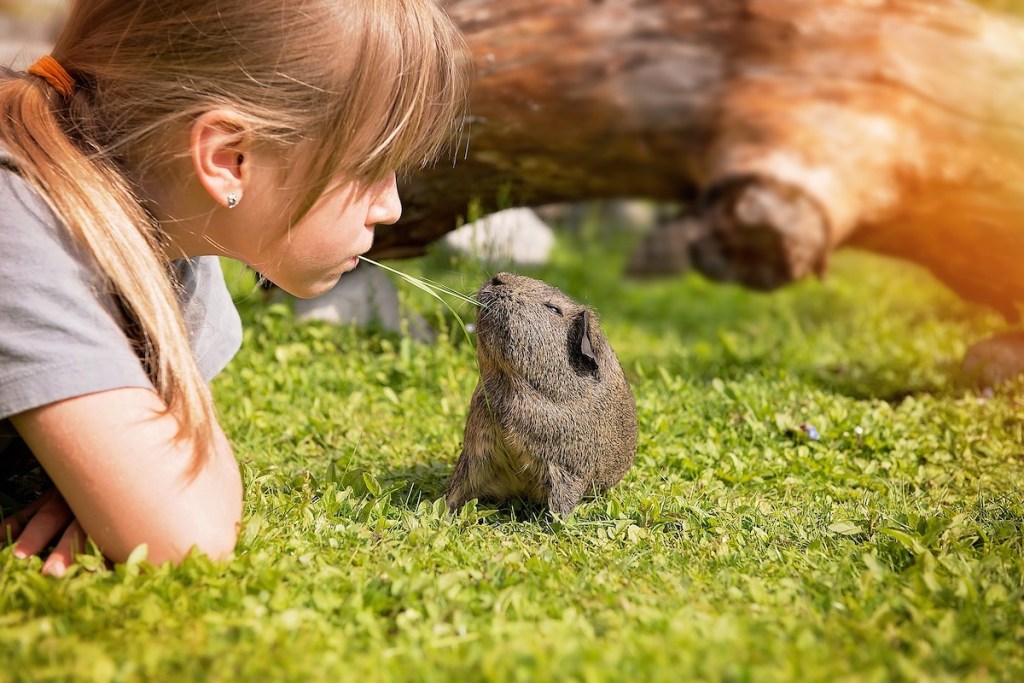
What fruits are bad for guinea pigs?
While apples and blueberries will make great snacks, there are some fruits you can not give your animal. These include anything with really strong flavors, like most citrus and spicy fruits. So don’t reach for the spicy peppers, lemons, or even sliced pineapple.
Your little guy is not prepared to take those on even if you enjoy them — it’s too much for his sensitive tummy. Additionally, you must avoid avocado, rhubarb, and tomato, much of which is poisonous to your pet. Lastly, don’t forget that even if the fruit itself is fine, you should get rid of the pit or seeds in advance.
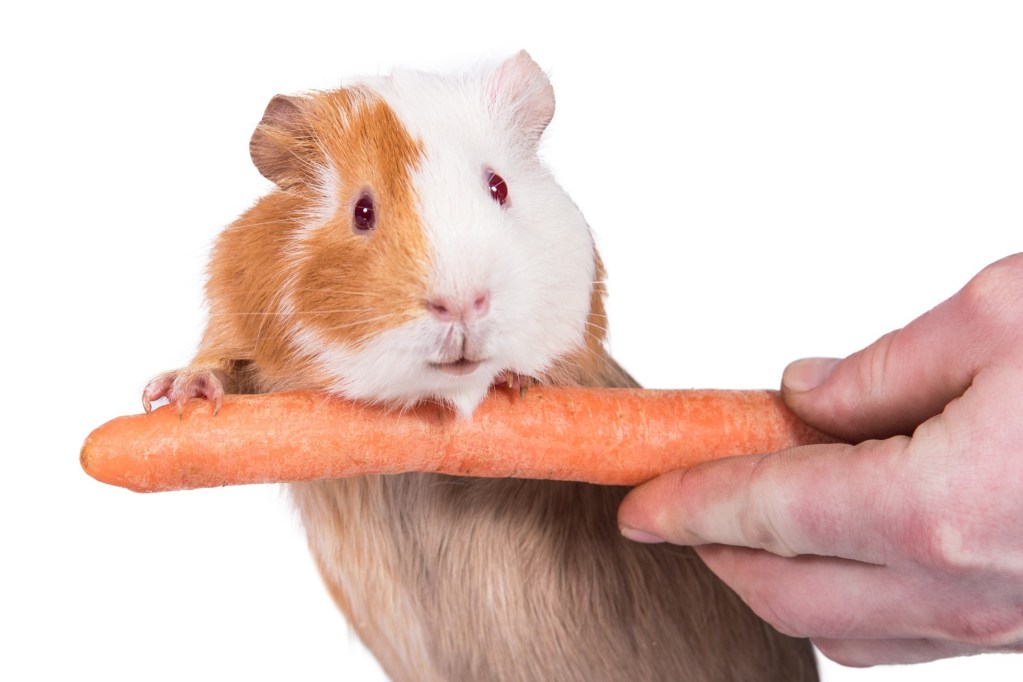
Keep your guinea pig’s diet varied
Giving your delightful pet a good life includes serving him excellent meals. As you don’t want the same things all the time, you should vary his diet, too. His bread and butter will be timothy hay with daily side salads and strawberries for dessert.
Remember: Guinea pigs should never eat actual bread or butter, and mushrooms, iceberg lettuce, and onions should also be avoided. No piggy can process junk food either and too much salt will make him sick (even if it seems he wants it). By balancing his diet, you help him to live a long and healthy life while enjoying the ride.


